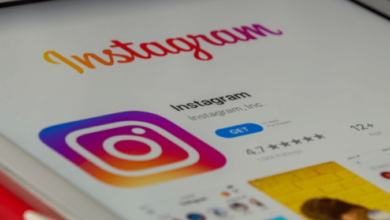How Instagram Ads Work: A Complete Guide to Paid Promotions

Instagram is one of the world’s most popular social media platforms, boasting over a billion active users each month. As the platform continues to grow, businesses are increasingly turning to Instagram Ads to reach new audiences, boost brand awareness, and drive conversions. But how exactly do Instagram ads work, and what’s the best way to use them to promote your business? This comprehensive guide to paid promotions on Instagram will walk you through the ins and outs of Instagram advertising, helping you get the most out of your ad campaigns.
What Are Instagram Ads?
Instagram Ads are paid promotional posts that appear in users’ feeds, Stories, Reels, and Explore pages. These ads are similar to regular posts but are labeled as “Sponsored” and can include features like links, call-to-action (CTA) buttons, and product tags, which aren’t available in regular posts. Instagram ads use the same powerful advertising platform as Facebook Ads, allowing businesses to target specific demographics, interests, and behaviors to maximize the effectiveness of their campaigns.
Instagram Ads can be a part of a broader social media strategy or a stand-alone tool for businesses looking to increase visibility, engagement, and conversions. Since Instagram is a visually-driven platform, ads that use high-quality imagery, engaging videos, and compelling content tend to perform best.
Types of Instagram Ads
Instagram offers a variety of ad formats designed to meet different marketing goals. Each format serves a unique purpose, and understanding them is essential to building an effective ad strategy. Let’s break down the most common types:
- Photo Ads
These are the simplest and most straightforward ad format on Instagram. A photo ad consists of a single image that can be enhanced with captions, CTAs, and other interactive features. They appear in users’ main feeds and blend seamlessly with organic content. Photo ads are ideal for showcasing products, promoting events, or sharing a specific message with your audience. - Video Ads
Video ads allow brands to create a more dynamic and engaging experience compared to static images. Instagram supports video ads up to 60 seconds long, though shorter videos tend to perform better in terms of engagement. These ads can be used to tell a story, demonstrate product use, or create a captivating visual narrative that resonates with your audience. - Carousel Ads
Carousel ads allow users to swipe through multiple images or videos within a single ad. This format is excellent for showcasing a range of products or telling a longer, multi-part story. Each image or video in a carousel ad can include its own CTA, giving businesses more opportunities to drive traffic and conversions. - Story Ads
Instagram Stories are ephemeral, full-screen posts that disappear after 24 hours. Story ads blend into this format, appearing between organic Stories that users are viewing. Because Stories take up the entire screen, they provide a unique opportunity for businesses to capture users’ attention without distractions. Story ads can include photos, videos, or even interactive elements like polls and quizzes. - Reels Ads
Instagram Reels is the platform’s answer to TikTok, offering short-form video content that encourages creativity and engagement. Reels ads appear between organic Reels and can be up to 60 seconds long. This format is especially popular among younger audiences and is perfect for brands looking to create viral or trendy content. - Explore Ads
Explore ads appear in the Explore section of Instagram, where users discover new content based on their interests. Since users in Explore mode are actively looking for new content, this ad format offers a great opportunity to reach users who aren’t already following your account. Explore ads can be in photo or video format. - Shopping Ads
Instagram Shopping ads allow businesses to tag products directly in their ads, making it easier for users to discover and purchase products without leaving the platform. These ads can appear in Feeds, Stories, and the Explore section. Instagram Shopping ads are perfect for e-commerce brands looking to drive direct sales from their ads.
How to Set Up an Instagram Ad Campaign
Creating an Instagram ad campaign is straightforward, especially if you’re already familiar with Facebook’s Ads Manager. Since Facebook owns Instagram, both platforms use the same ad management interface. Follow these steps to set up your campaign:
- Choose Your Objective
The first step in creating an ad campaign is selecting your campaign objective. Instagram offers several objectives to choose from, including brand awareness, reach, traffic, engagement, app installs, video views, lead generation, and conversions. Your objective will determine how your ads are optimized and which metrics Instagram focuses on when displaying your ad to users. - Define Your Audience
Instagram’s advanced targeting options allow you to reach specific audiences based on demographics, location, interests, behaviors, and more. You can also create custom audiences based on your own customer data or use lookalike audiences to find users who are similar to your existing customers. - Set Your Budget and Schedule
Instagram allows you to set a daily or lifetime budget for your ad campaign. A daily budget limits how much you spend each day, while a lifetime budget spreads your total ad spend across the duration of your campaign. You can also choose to run your ads continuously or during specific times when your audience is most active. - Design Your Ad
The creative part of the process is where you design the actual ad. You’ll choose the format (photo, video, carousel, etc.) and upload your visuals. Don’t forget to include a compelling CTA and any relevant links that drive users to your website or product page. - Monitor and Optimize
Once your ad is live, it’s important to track its performance. Facebook’s Ads Manager provides detailed insights into how your ad is performing, including metrics like reach, impressions, clicks, conversions, and more. Use these insights to optimize your campaign by adjusting your targeting, budget, or creative as needed.
Targeting Options for Instagram Ads
One of the most powerful features of Instagram ads is the advanced targeting options available through Facebook Ads Manager. Targeting the right audience is critical for the success of your ad campaign, and Instagram provides several ways to zero in on your ideal customer:
- Demographics: You can target users based on basic demographics like age, gender, location, and language.
- Interests: Instagram allows you to target users based on their interests, which are determined by their activity on both Instagram and Facebook.
- Behaviors: Behavioral targeting lets you reach users based on actions they’ve taken on the platform, such as purchasing habits, device usage, and engagement with specific types of content.
- Custom Audiences: If you have existing customer data, such as email addresses or phone numbers, you can upload it to create a custom audience. Instagram will match this data with its users to show your ads to people who have already engaged with your business.
- Lookalike Audiences: Lookalike audiences allow you to target users who are similar to your existing customers. This feature is particularly useful for finding new potential customers who share similar characteristics to your current audience.
Budgeting for Instagram Ads
Instagram ads operate on a bidding system, where you set a budget, and Instagram determines how much of that budget to spend on each impression, click, or action. There are two main ways to control your ad spend:
- Cost Per Click (CPC): This option charges you each time someone clicks on your ad.
- Cost Per Impression (CPM): This option charges you based on how many times your ad is shown, regardless of whether it was clicked.
Instagram ads allow you to set a daily budget (how much you spend per day) or a lifetime budget (how much you want to spend over the course of the campaign). Once your budget is set, Instagram will show your ad to the audience you’ve targeted and bid for placement against other advertisers.
Measuring the Success of Your Instagram Ads
To understand how your Instagram ads are performing, you’ll need to track key metrics and analyze the data. Here are some of the most important metrics to watch:
- Impressions and Reach: Impressions refer to how many times your ad was shown, while reach measures the number of unique users who saw your ad.
- Click-Through Rate (CTR): CTR measures the percentage of people who clicked on your ad after seeing it. A higher CTR typically indicates that your ad is relevant and engaging to your audience.
- Conversion Rate: If your goal is to drive sales or leads, your conversion rate will show how many users took the desired action after clicking on your ad.
- Cost Per Conversion: This metric measures how much you’re spending for each conversion. Keeping your cost per conversion low is essential for maximizing ROI.
By regularly reviewing these metrics and making adjustments to your targeting, creative, and budget, you can continually improve the effectiveness of your Instagram ad campaigns.
Best Practices for Instagram Ads
Running a successful Instagram ad campaign requires more than just setting a budget and hitting “publish.” To truly maximize your results, follow these best practices:
- Use High-Quality Visuals: Instagram is a visual platform, so your ads need to stand out. Use professional-quality images or videos that capture your audience’s attention.
- Keep It Short and Engaging: Especially for video ads, make sure your content is concise and engaging from the first few seconds. Instagram users tend to scroll quickly, so you need to capture attention fast.
- Optimize for Mobile: Most Instagram users are on mobile devices, so your ads should be designed with mobile users in mind. This includes using vertical formats for Stories and Reels ads.
- Include a Strong CTA: Every ad should include a clear and compelling CTA that tells users what to do next. Whether it’s “Shop Now,” “Learn More,” or “Sign Up,” your CTA should be easy to understand and aligned with your campaign goals.
Frequently Asked Questions (FAQs)
1. How much does it cost to run Instagram ads?
Instagram ads can cost anywhere from a few cents to several dollars per click, depending on your targeting, budget, and competition. On average, businesses can expect to pay between $0.20 and $2.00 per click.
2. Can I run Instagram ads without a Facebook account?
No, since Instagram ads are managed through Facebook Ads Manager, you’ll need a Facebook account to create and manage your ads.
3. What’s the best ad format for Instagram?
The best format depends on your goals. Photo ads are great for simple promotions, while video and carousel ads are better for storytelling and showcasing multiple products.
4. How long should my Instagram ads run?
There’s no one-size-fits-all answer, but many businesses find success with campaigns that run for at least a week to give the algorithm time to optimize and reach the right audience.
5. What’s the difference between boosting a post and running an ad?
Boosting a post is a simplified version of running an ad. It allows you to promote an existing post to a wider audience without using Ads Manager’s full features, such as detailed targeting and ad objectives.
6. How do I track conversions from Instagram ads?
You can track conversions using Facebook Ads Manager’s tracking tools. Make sure to set up conversion tracking on your website and integrate it with your ad campaigns.
Conclusion
Instagram ads offer businesses an excellent opportunity to reach a large, engaged audience with targeted and visually compelling promotions. By understanding the different ad formats, mastering the setup process, and optimizing your campaigns, you can create highly effective Instagram ads that drive real results for your brand.






